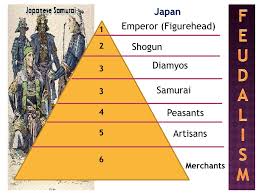
Despite all these restrictions, the Japanese economy grew, as agricultural production increased and the population grew.

Europeans were expelled from Japan, and foreign merchants were not allowed to trade in Japanese ports-the only exception was a small number of Chinese and Dutch ships.

Japanese were forbidden from going abroad and from constructing large ships. Relationships with the outside world became closely controlled. He required that they spend every other year at the capital, Edo (now Tokyo), where he could more easily monitor them and prevent rebellion. Ieyasu hoped to stabilize the country and end the unrest by increasing his control over the daimyo. Fighting had broken out among various daimyo (warlords) over succession of the shogun, the supreme military leader of Japan. Tokugawa Ieyasu established the Tokugawa Shogunate in 1600, after a period of civil war that began in 1467. Japanese and East Asian Political Reform of the Twentieth and Twenty-First Centuries.

Read on for key events and periods in Japanese history, and check out our Civilizations in Asia post for info about other ancient Asian civilizations. Knowing the history of Japan as an individual nation and as a contributor in world events is absolutely necessary for success on the AP World History: Modern Exam.


 0 kommentar(er)
0 kommentar(er)
